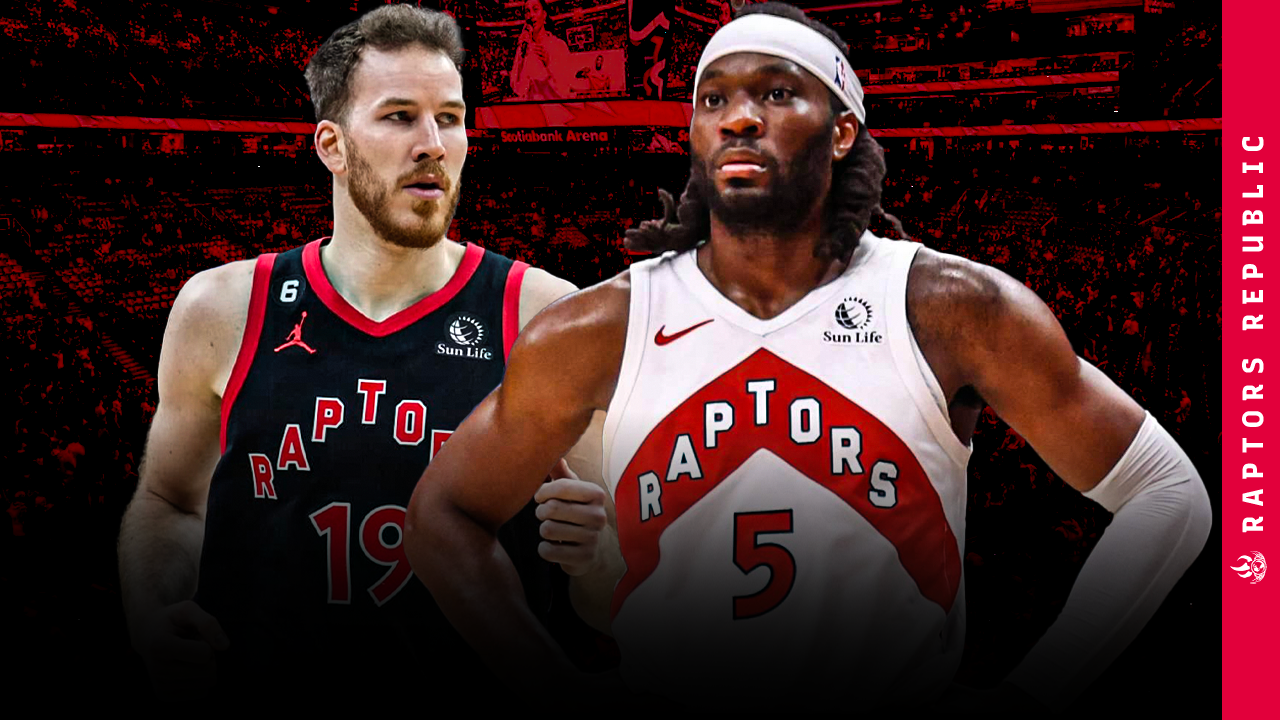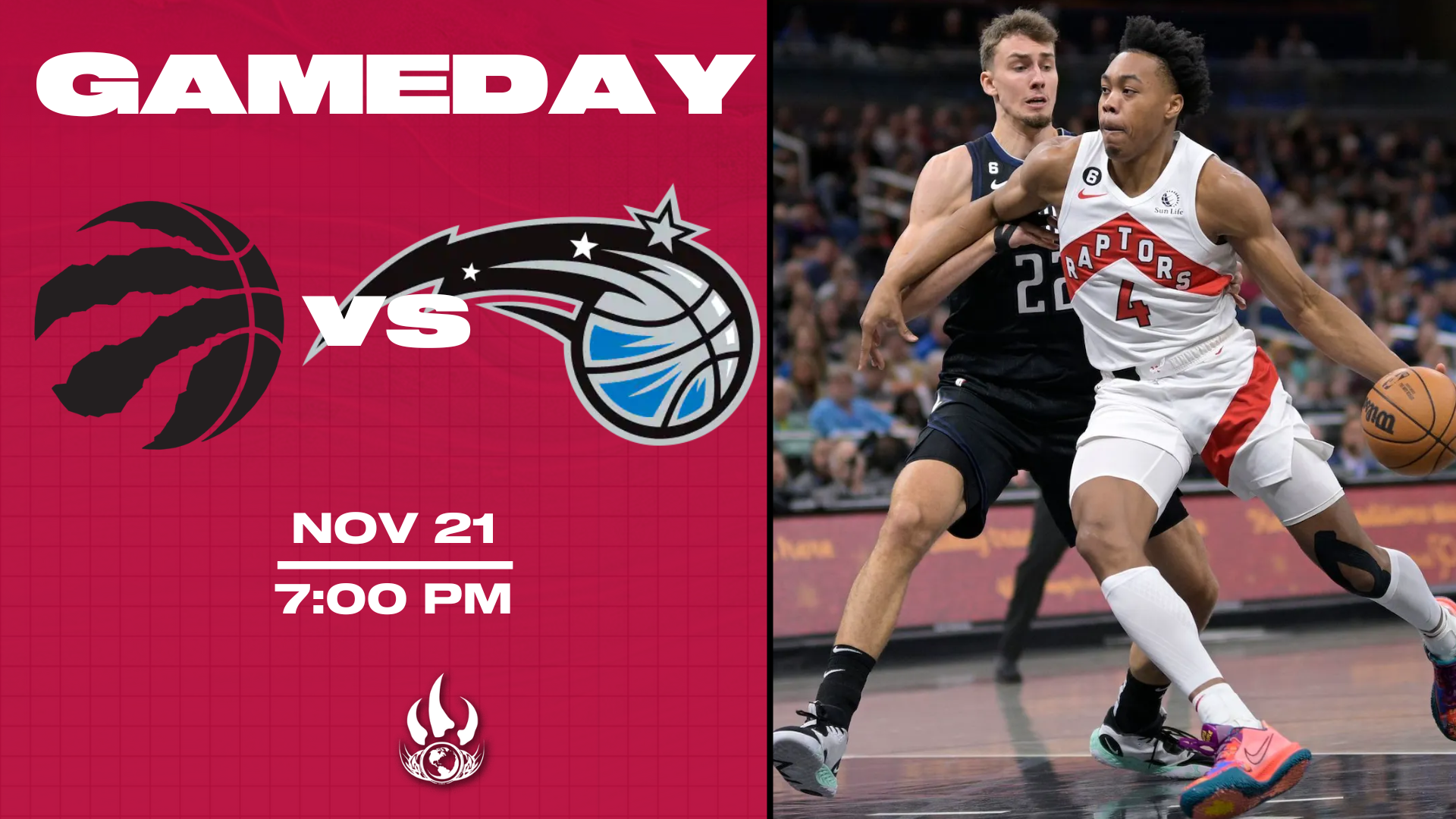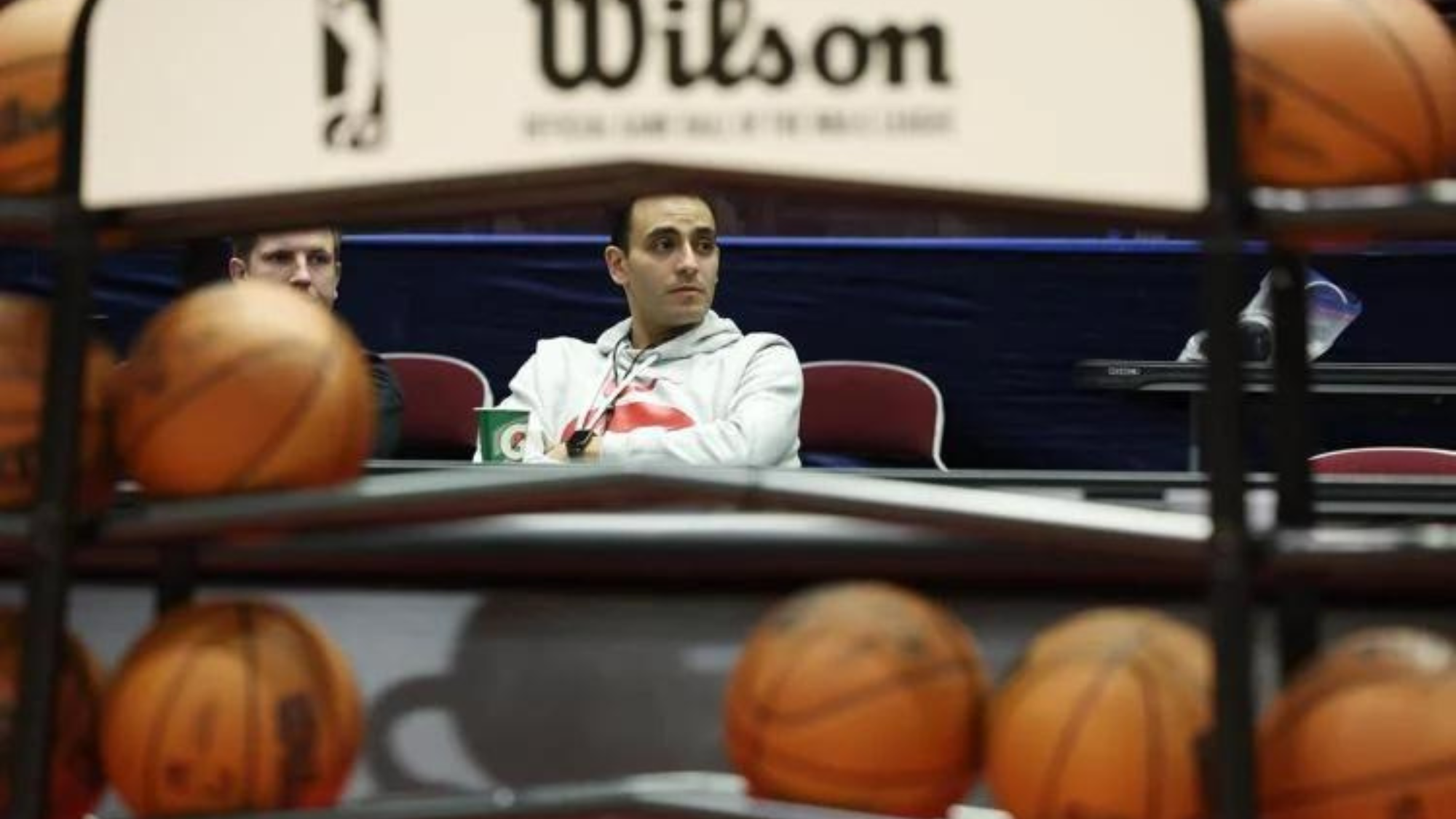There comes a time in the Ruy Lopez opening when White faces a crossroads. White develops its King’s pawn, then its King’s knight. Then it pushes the Queen’s pawn. So far, so normal. But if Black takes, there is a question. White can recapture, which will often lead to a thoughtful, positional battle with both players grappling for space in the middle of the board. Or White can let Black have the pawn and develop a bishop, sacrificing material for activity. That choice, the Scotch Gambit, can lead to fireworks, with sacrificed pawns, bishops, and more as White strives for a knockout and Black to survive.
The same position can have two very different continuations.
That duality can manifest in people, too. In expectations from the same job description. To that point: The Toronto Raptors have not just a positional battle at the center spot, but an ideological battle. What do they want out of the center spot? What is best for this team — the players currently on the roster, or the philosophical ideal of how Darko Rajakovic wants to play? And how does that split manifest in two very different centers currently vying for minutes?
Jakob Poeltl meant everything to the Toronto Raptors after they acquired him at the trade deadline of the 2022-23 season. Poeltl helped lock down the pick and roll for Toronto in a way that it previously hadn’t been able to manage on the defensive end. Because Toronto finally found a way to both deter and stop opponents at the rim, it finally could stop helping so much from the corners and disallow so many easy triples. In many ways, Poeltl joined a Raptors team with a decidedly Poeltl-sized hole in the middle of the roster. He was loudly successful.
And yet, much more quietly, he also catalyzed a number of issues on the team — ones that had already existed, but were simply made more material with him on the court. The Raptors just don’t have enough shooting on the roster, and (at least last season) started non-shooters at center, power forward, and small forward spots. With Poeltl in the middle of the floor, Toronto’s already shaky spacing cratered.
While Scottie Barnes and Pascal Siakam didn’t run fewer possessions after the Poeltl trade, their efficiency when doing so plummeted with another non-shooter on the floor. Toronto’s efficiency with Siakam running picks last season dropped from 1.003 points per chance before the Poeltl trade to 0.922 after, per Second Spectrum. The team’s efficiency with Barnes running picks dropped from 0.961 points to per chance before to 0.840 after. Those are precipitous drops, from well above average to near the bottom of the league.
As a result, the Raptors have actually had a slightly negative net rating since acquiring Poeltl when he joins both Siakam and Barnes on the floor, but without Fred VanVleet. So far this season, Poeltl, Siakam, and Barnes together have had a net rating of plus 1.3, as opposed to plus 15.6 when Siakam and Barnes play without Poeltl. The lack of spacing has been apparent; lineups with all three playing attempt only 27.7 percent of their shots as triple, a 1st-percentile mark leaguewide. (The team as a whole attempts more than a third of its shots from deep.)
For those reasons, Poeltl does not always close games. While he’s sixth on the Raptors in minutes per game, behind only the starters and Gary Trent jr., he’s 12th in minutes per fourth quarter, averaging almost three full minutes fewer than his substitute Precious Achiuwa. (That is of course distorted by garbage time, which sometimes includes Achiuwa, but the point remains.)
Poeltl is, for these Toronto Raptors, a very positional chess game. He fights for space, clocking small advantages on both ends and slowly choking the other team with them. He doesn’t meet opponents above the rim so much as deter the shot from happening in the first place. He doesn’t throw down dunks so much as use unique footwork to create openings. He doesn’t space the floor so much as cut from the dunker spot for release-valve finishes.
Achiuwa is just the opposite. He does — or at least can do — everything Poeltl can’t. If Poeltl is Karpov, then Achiuwa is Mikhail Tal.
“I really think that using him [as a center] really unlocks a lot of skills and traits that he has,” said Darko Rajakovic.
He doesn’t meet people early in the paint as much as above the apex of the rim. He switches rather than drops when defending pick and rolls. He fires dunks into the cylinder with abandon. (His lob finishing out of the pick and roll has been particularly devastating in some games this season.) He is happy to fire up jumpers as a popper, out of delay actions, in isolation — anything. Well, all of that is mostly theoretical, in that it comes and goes. But the last time the Raptors were actually a good team came at the end of 2021-22 season, when Precious Achiuwa was raining hellfire from deep as a center, driving and dunking, and defending everyone on the other end. His hot streaks coincide well with Toronto’s best performances. Of course, he’s not always on a hot streak.
“He’s doing [a] good job, and I expect him to do [an] even better job,” said Rajakovic after Toronto’s win over Detroit. “I think he has a lot of potential, lot of talent, and I’m hard on him. We are talking every single day what I want from him, what this team needs from him, what he’s capable of giving us. I want to see that on every single possession he’s on the court. I thought he did great job today, I want even more.”
Rajakovic should want even more. A consistent Achiuwa would be a uniquely impactful role player, offering everything teams want from the center spot and more. The road has sometimes been bumpy in the process of getting Achiuwa to that point. Chess gambits don’t always work. When they do, they are spectacular games demonstrating masterful tactical vision. When they don’t, the offensive player often looks like roadkill when the attack dries and the piece advantage becomes apparent.
Since acquiring Achiuwa, the Raptors have had a net rating of plus 0.9 when all of Achiuwa, Barnes, and Siakam are on the court — versus plus 3.2 when Barnes and Siakam play without Achiuwa. Despite playing an opposite style, his impact alongside the stars looks suspiciously like Poeltl’s — and that’s not a positive.
While there are many impressive things both Poeltl and Achiuwa offer to the Raptors, the team with both its stars on the court has in some ways been worse with either of its centers alongside them.
If Poeltl is a square peg in a round hole, then no less is Achiuwa a round peg in a square hole. That shifting nature of what Toronto needs represents the shifting flaws across the rest of the roster. Virtually no center could offer what Toronto needs, not without sacrificing abilities elsewhere. (That’s how the center position can be Schrodinger’s Hole, both round and square, in this analogy.)
Toronto needs a big with the size and strength to meet opponents in the paint, early, to stop shots from even getting up. It also needs a big with the speed and agility to scamper from the paint to the corners to deter shots. Oh, and then to return to the paint to grab the rebound. It needs a big who sets real, heavy screens and can roll into the paint and finish with strength over contests. It also needs a big who can stroke triples and pump fake into slithery drives.
Okay, so Toronto needs Joel Embiid. Well, it can’t have him. So it’s left with Jakob Poeltl and Precious Achiuwa. All told, they are impressive choices, but they don’t always fulfill what the Raptors need, schematically. If you are thinking at this point that the Raptors should simply create a machine to combine the two players, you wouldn’t be alone; in fact, Toronto can also play both of them at the same time. Indeed, in those (very, very few) minutes, Toronto has annihilated opponents with a net rating of plus-24.
“[We don’t play together] a whole lot, but… it’s fun because we can both fill that [center] role,” said Jakob Poeltl. “There was a stretch with me in that Celtics game where they were guarding me with guards expecting the pick and roll so they can switch it. We just ended up sending Precious into the screen so we’re not allowing that pre-switch to happen too much. And he’s so versatile on defense you can put him on anybody, so it’s never going to be an issue on defense.”
And yet even if the success of Poeltl and Achiuwa together carries into more minutes together, it would the Raptors are giving two frontcourt spots to players none of whom are named Siakam, Barnes, or OG Anunoby. There is a tension inherent to this roster, and it spreads to the center position.
Of course, if Barnes is the knockdown shooter he has appeared to be so far this season, that simplifies things. If Siakam’s jumper comes back around, then it doesn’t really matter if the big is a spacer. That’s all theoretical, of course, but Barnes’ spacing at the very least has been like mana in the desert. He has found defenders biting on his pump-fakes more and more frequently, allowing him to get into the paint and wreak havoc on defenses. Against the Detroit Pistons, he shot 3-of-4 from deep, preparing for his shots long before the ball touched his hands. His confidence in his jumper is at an all-time high, and both he and defenses are starting to treat him like a shooter. He’s hitting like Kevin Durant from the long mid-range and deep — it’s hard to count on that continuing, but he doesn’t need to be this good for defenses to start respecting him.
Perhaps not coincidentally, Poeltl dominated the Pistons in the same game that Barnes’ jumper was immaculate. Poeltl finished with 16 points, diving to the rim in space and finishing everything he touched there. He had oodles of space in the paint. (It helped that the Pistons just didn’t have anyone with the size to bother him and also didn’t really play much defense anyway.) At the same time, Achiuwa was raining triples, driving and finishing, bringing the ball up the court, running delay actions, and altogether offering Toronto the uppercut to Poeltl’s jabs.
At their best, Poeltl and Achiuwa can combine to devastate opponents, like a good curveball in the arsenal of a fastball pitcher. On top of all their disparate skills, both are creative passers who can maintain advantages; they combined for nine assists against the Pistons. At their worst, they can both fail to help Toronto, either clogging the offensive end or freelancing out of plays for turnovers and ugly missed isolations. And whether they’re at their best or their worst might not depend entirely on their own games as much on the context that their star teammates offer to their games.
The better Barnes can shoot, the more space Achiuwa will have for his forceful drives, the more space Poeltl will create with his screens, the more time both will have to make choices. You know how the Theory of Relativity taught us that time is actually space? Well, in the game of basketball, shooting is both.
The Scotch Gambit is not played at the highest level of chess. It is too chaotic, too baseless; while White can create tension, it ultimately loses a pawn, and if Black plays correct defense, White simply cannot make back that difference. However, the Ruy Lopez is a very popular opening even among the best. The Scotch lines are not.
And that speaks to more of Toronto’s ideological needs from the center position. Broader than spacing or passing, defense or driving, Toronto needs a player upon whom it can rely consistently. Achiuwa may have all the potential in the world, but he does not apply it successfully, in winning contexts, every time he is on the court. And while Poeltl has also been inconsistent so far this season, by his excellent standards, the Raptors have simply been better with him on the court than they have with Achiuwa.
No matter what skillset the Raptors want from their center spot, it’s important that whomever plays there can at least impact the game with his skills every night. That’s true of all of the Raptors, to different extents; suffering from inconsistency is near universal for sub-.500 teams. But it is significant that Poeltl and Achiuwa do not, unlike the Scotch Gambit and the positional lines of the Ruy Lopez, have to be mutually exclusive. They can succeed together, and they can succeed apart. It’s on them, and the Raptors, to make sure that both possibilities happen much more often.



